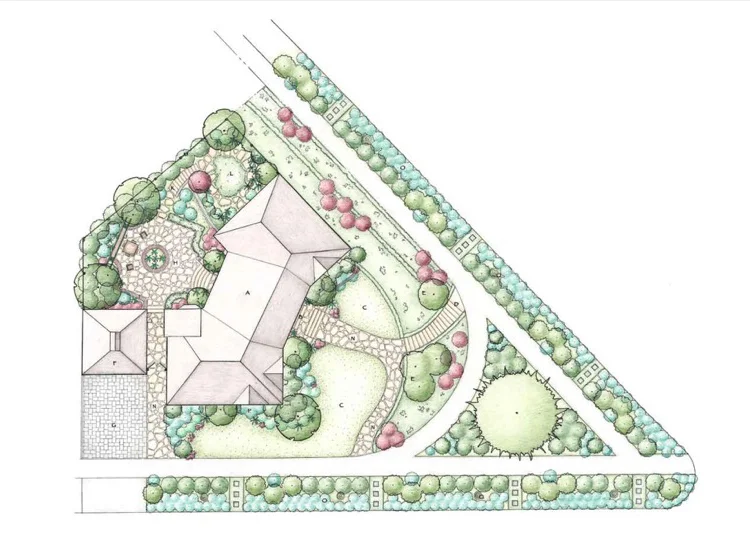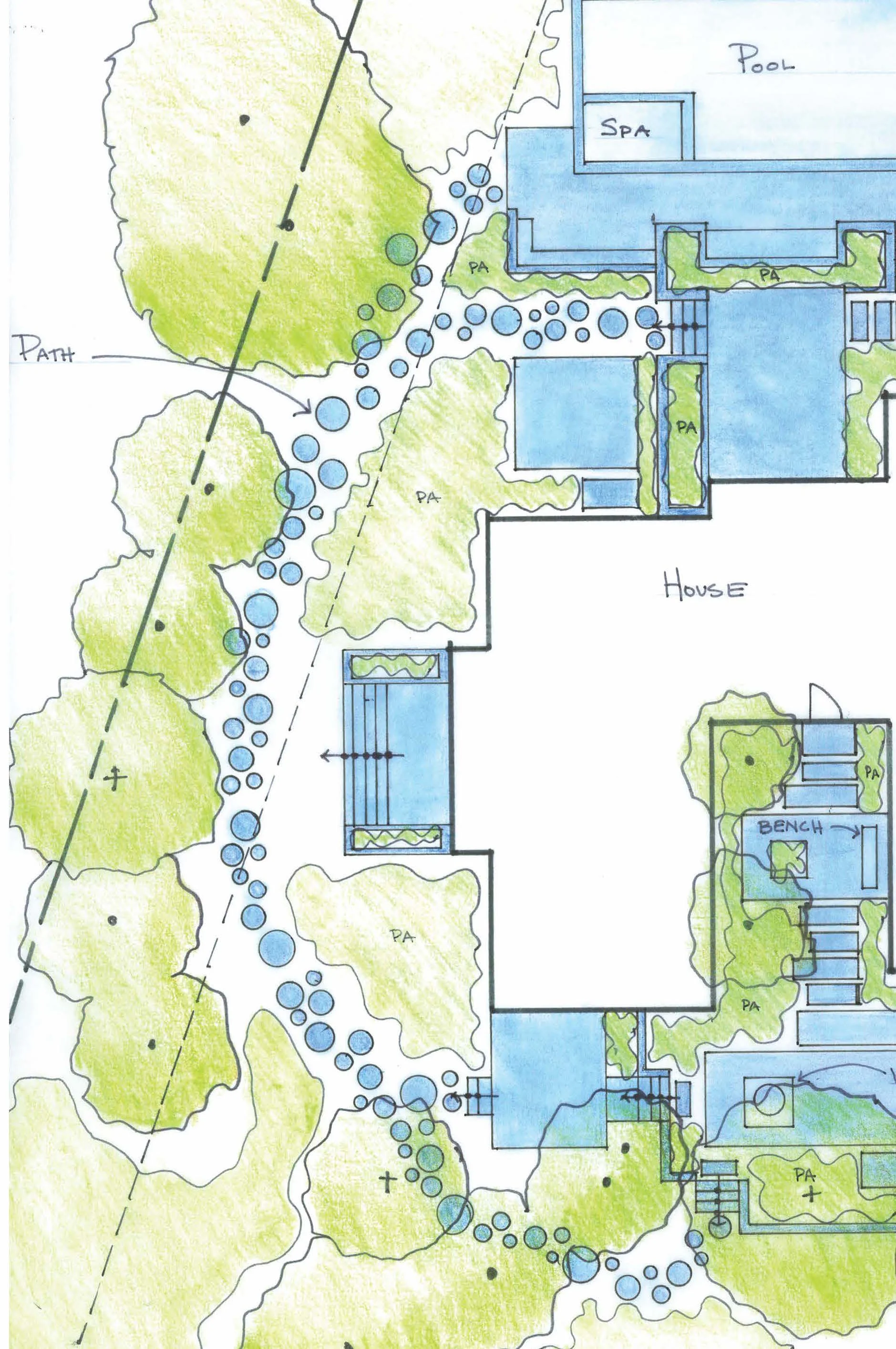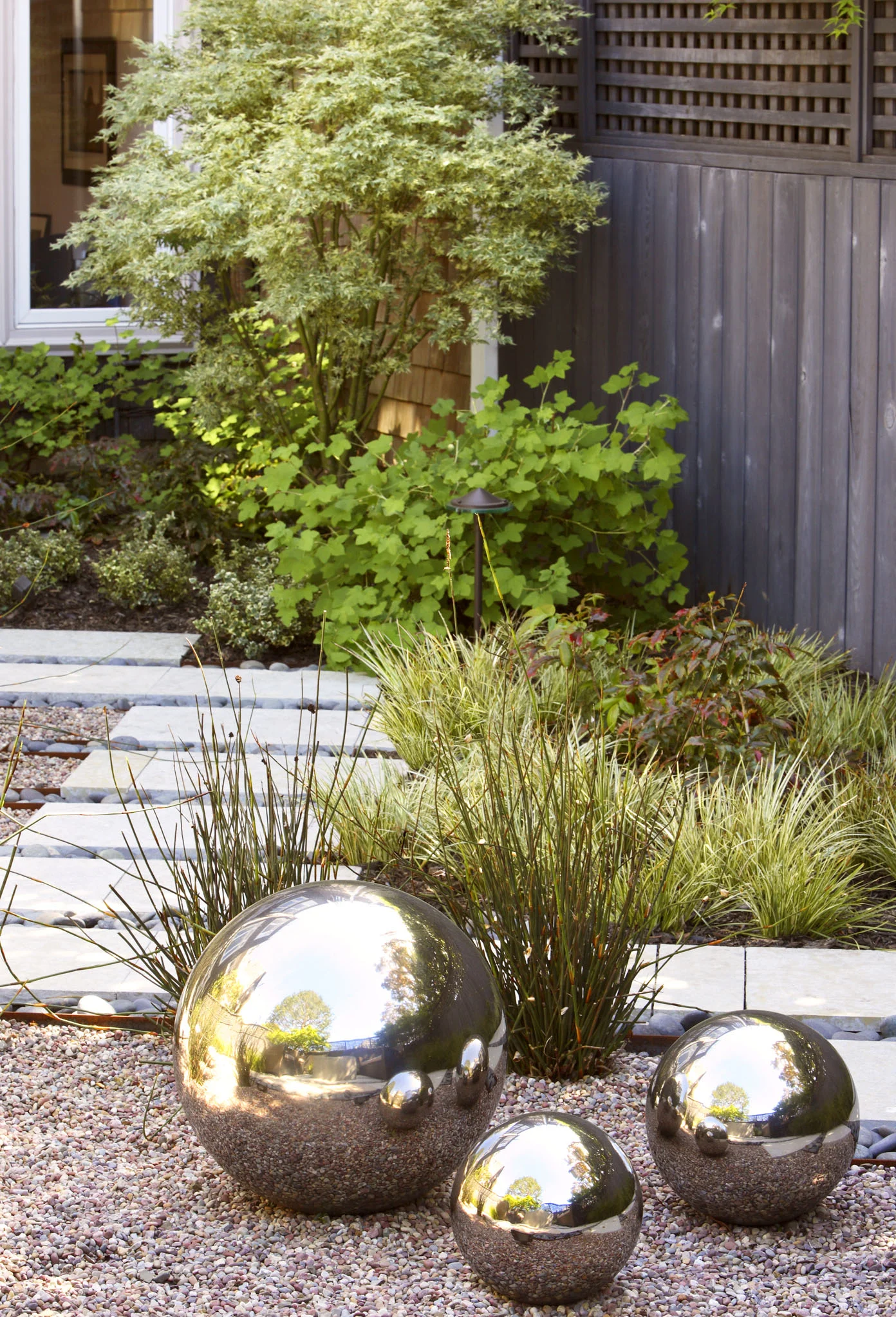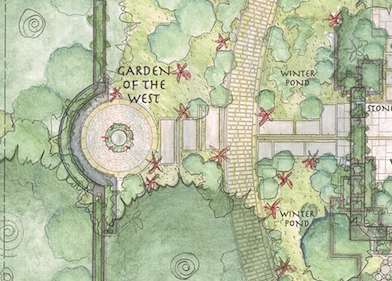Garden Geometries: Point
By Vera Gates
We begin the design process simply, as a study of point and line. This allows us to calibrate the site, the architecture and our design intentions as we get our bearings. Pretty quickly the design evolves and expands into other forms, in direct response to this early exploration.
We use point to identify key factors: entry, cross axis, destination and legacy trees. We use line to create connection, identify key site lines, and provide movement. We will talk about line in our next post. Today, we want to talk about point.
At its most basic, point is the starting place for all geometric forms. In plan, the point represents where things touch and connect to the earth, and it is so often best expressed as it arises into vertical form. Point represents a placeholder, which will eventually become something significant, such as a great tree, fountain or sculpture.
A point can locate the origin from which a circle is struck, the tangent from which a spiral unfurls or the junction where two lines intersect.
Always, it represents something with some degree of meaning. And part of the design process is weighting these points with greater and lesser importance.
The point also expands to celebrate those moments of the site we feel are, or could be, significant. Point symbolically represents the heart center and a well-executed design often features that spirit center in a comprehensible way. When we are in such a space, we recognize it as a significant, central place.
Point can also be repeated to create a pattern, either vertically or horizontally. We don’t use this too much, but it’s a fun option.
It often represents a focal point or destination, that for which you have journeyed to see.
We'd like to thank Sculpturesite for letting us share work from their featured artist, Ivan McLean.
For more inspiration, we'd highly recommend visiting their website or gallery in Glen Ellen. Also, stay tuned for Vera's sculpture guest curation!











